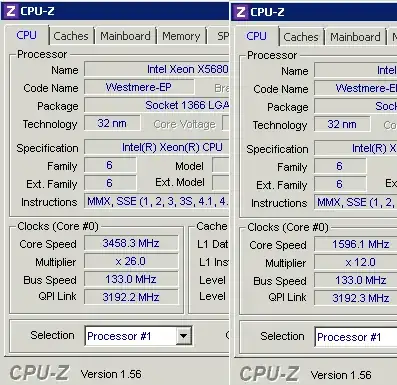How do you disable CPU power management scaling in Windows Server 2008 R2?
After setting the Control Panel, Power Management plan to performance and then rebooting -- CPUID's Cpu-Z still shows the clock speed being scaled.

How do you disable CPU power management scaling in Windows Server 2008 R2?
After setting the Control Panel, Power Management plan to performance and then rebooting -- CPUID's Cpu-Z still shows the clock speed being scaled.

There are 3 Main BIOS settings in the Dell R710 that control this under Power Management:
OS Control sets the CPU power to OS DBPM, the fan power to Minimum Power, and the memory power to Maximum Performance. In this setting, all processor performance information is passed from the system BIOS to the operating system for control. The operating system sets the processor performance based on processor utilization.
Active Power Controller sets the CPU power to System DBPM, the fan power to Minimum Power, and the memory power to Maximum Performance. The BIOS sets the processor performance based on processor utilization.
Maximum Performance sets all fields to Maximum Performance.
We had it set to "System DBPM" so it was ignoring the OS settings.
It is worth noting that this was digging into why some of our full text SQL queries were taking so long. After this change we observed that these queries dropped from an average of 1285 ms to 335 ms.
For posterity, here are the settings needed for HP servers (as of the DL360G6 I just checked)
The main one:
The other one: